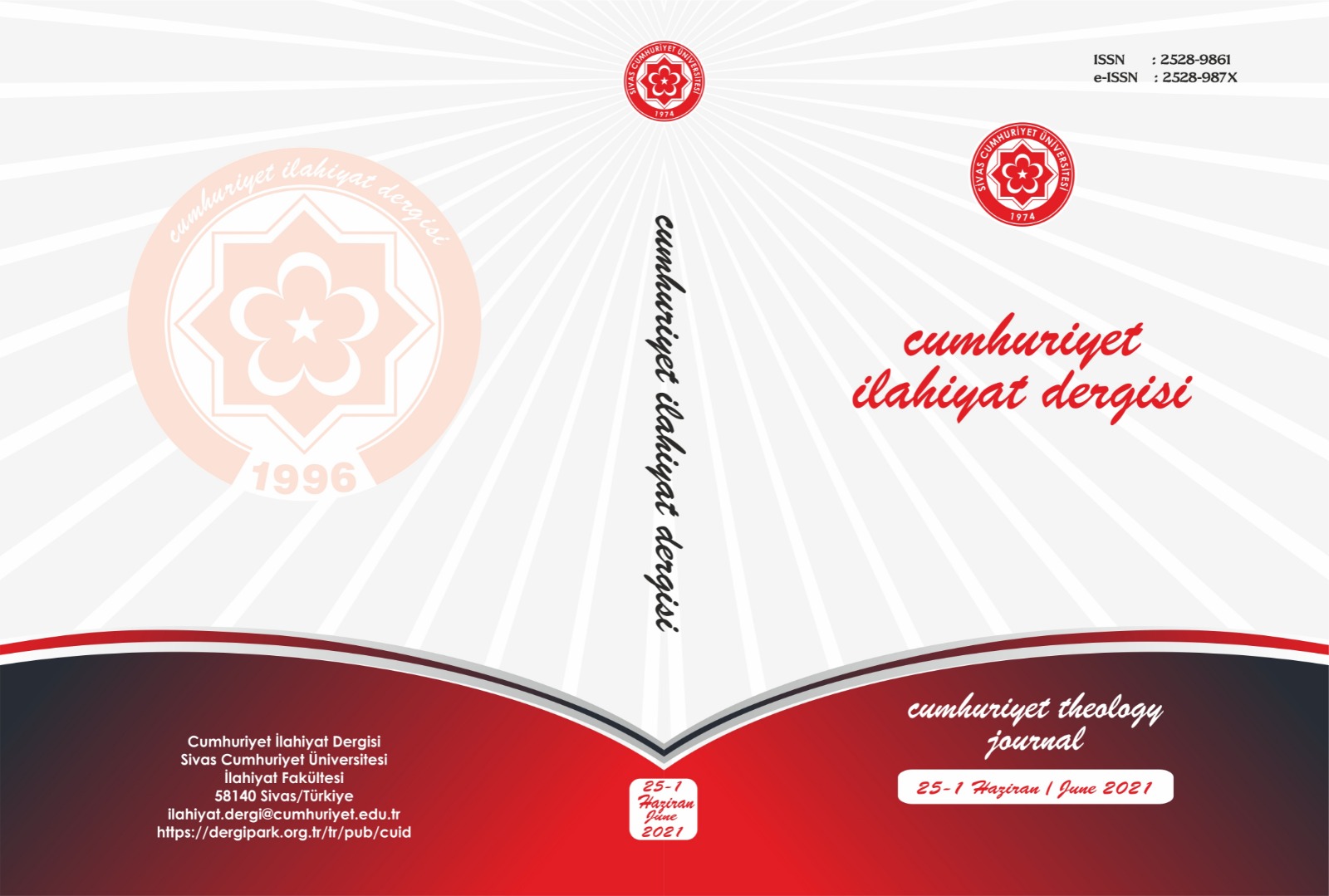Murîd el-Berğûsî’nin Raeytu Râmallah İsimli Romanının Teknik ve Tematik İncelemesi
Technical and Thematic Review of Mourid Barghouti's Novel I Saw Ramallah
Technical and Thematic Review of Mourid Barghouti's Novel I Saw Ramallah
Author(s): Ahmet YıldızSubject(s): Theology and Religion
Published by: Cumhuriyet Üniversitesi İlahyat Fakültesi
Keywords: Arabic Language and Rhetoric; Novel; I Saw Ramallah; Mourid Barghouti; Palestine.
Summary/Abstract: Novel, as a literary genre, is described as the expression of events and emotions by using unconventional methods and techniques; beyond this, novek is also a subject of sociology. For this reason, writers have used the art of the novel as a way of expressing the pain experienced by the individual and its social dimensions. One of these writers is Mourid Barghouti (d. 2021), who was born in Palestine in 1944 and studied English Language and Literature at Cairo University. Banned from entering Palestine in 1967 when he graduated from the university, and exiled from Egypt for criticizing Anwar al-Sādāt's (d. 1981) visit to Israel, Barghouti lived in exile for 17 years in various Arab and European countries away from his wife and child. Barghouti, who returned to Palestine 30 years after his departure, wrote a novel called I Saw Ramallah. This novel was first published in 1997, and he expressed his homesickness and the experiences of the Palestinian people after the occupation. Divided into nine chapters, consisting of 220 pages and translated into many languages, the novel shows the drama of many Palestinians who entered the British mandate after World War I, whose lands were occupied with the establishment of Israel in 1948, and who was forced to leave their homeland. In this sense, the novel I Saw Ramallah reflects both the expatriation of Palestine and the author. In this study, the work named I Saw Ramallah was elaborated in terms of technique in order to determine to what extent the author used the rules of the art of the novel, and thematically which subjects were handled in the novel. It is understood that the name of the novel was chosen to reflect the content by making use of the symbolic value of the place. This novel is seen as an autobiographical novel type, due to the author’s narrator technique used and the author tells his own life. The author's entry into Palestine is used as the objective tense of the novel; the author, with recollections and connotations in objective time, conveyed his experiences by using the flashback method. Events that contain enough sadness have been tried to be conveyed as they happened by mentioning time, place and individuals in order to awake the reader's feelings. Although the events in the novel are listed non-chronologically, when the whole novel is examined, it is seen that the author writes his experiences within the framework of the days he spent in Ramallah and the memories that they remind him of, and in the order in which they come to mind. In almost all of the novel, classical Arabic is preferred. The novel has avoided as much forced expressions and literary expressions that enlarge or reduce events as possible. Although it is impossible to claim that he is completely impartial as a Palestinian, it is seen that the author describes the events with the simplicity of a Palestinian citizen, away from political conflicts as much as possible and in a natural language. It is possible to say that the dominant use of critical style in the novel as the experiences of a writer suffered living abroad throughout his life, shaped his perspective on life and its reflection on the novel. The main topic of the novel is the absence from home. In addition, those killed far away from their homeland, Jewish settlement, the effect of Jewish occupation on the social life, the Oslo Agreement and the role of the phone in the life of the expat are handled as sub-themes. Although the novel named I Saw Ramallah is mostly close to daily or commemorative works and does not fully fit in the definitions of novel art as it emerged in the West, it includes the style of novel art at a certain level. It is seen that the novel has an important place in terms of raising awareness on the Palestinian issue in the Arab and Islamic world. The novel I Saw Ramallah, which was awarded The Naguib Mahfouz Medal for Literature by the American University in Cairo in 1997, is likely to have received this award because of its thematic aspect rather than its stylistic aspect. Considering this award that the novel won against its peers and the considerations we mentioned during the technical and stylistic analysis we made about the novel, it is seen that the art of the novel in Arabic literature is still in the development stage.
Journal: Cumhuriyet İlahiyat Dergisi
- Issue Year: 25/2021
- Issue No: 1
- Page Range: 23-47
- Page Count: 25
- Language: Turkish

